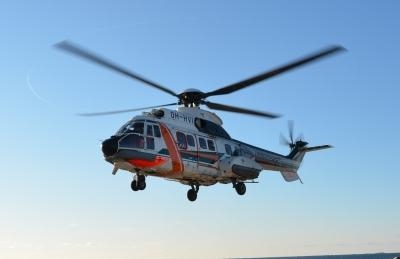Sun, Feb 20, 2022
AD 2022-03-13 Supersedes Airworthiness Directive (AD) 2014-21-03
The FAA is superseding Airworthiness Directive (AD) 2014-21-03, which applied to Airbus Helicopters Model AS332L2 helicopters with a certain yaw control damper support (support) installed.

AD 2014-21-03 required repetitively inspecting the support attachment points for a crack. Since the FAA issued AD 2014-21-03, an improved (reinforced) support was developed. This AD retains the inspection requirements of AD 2014-21-03 and requires installing the improved support as specified in a European Union Aviation Safety Agency (EASA) AD, which is incorporated by reference. The FAA is issuing this AD to address the unsafe condition on these products. This AD becomes effective March 1, 2022.
Supplementary Information: The FAA issued AD 2014-21-03, Amendment 39-17995 (79 FR 63809, October 27, 2014) (AD 2014-21-03), for Airbus Helicopters Model AS332L2 helicopters with a support part number (P/N) 332A25-1334-00 installed. AD 2014-21-03 required for helicopters with 3,900 hours time-in-service (TIS) or more, within 100 hours TIS and thereafter at intervals not exceeding 825 hours TIS, inspecting each support at the four attachment points for a crack. If there is a crack, AD 2014-21-03 required replacing the support before further flight. AD 2014-21-03 was prompted by EASA AD 2014-0080, dated March 27, 2014 (EASA AD 2014-0080), issued by EASA, which is the Technical Agent for the Member States of the European Union, to correct an unsafe condition for Airbus Helicopters, formerly Eurocopter, Eurocopter France, Aerospatiale, Model AS332L2 helicopters with support P/N 332A25-1334-00 installed. EASA advised of several reports of cracks on the two front attachment points of the support, and that
subsequent investigations determined pilot actions on the yaw pedals could generate detrimental loading conditions on the support attachment points and initiate a crack. This condition, if not addressed could lead to structural failure of the support, detachment of the damper unit, possible blocking of the yaw flight control channel, and reduced control of the helicopter. Accordingly, EASA AD 2014-0080 required repetitive inspections of the support and, if there is a crack, replacing the support.
More News
We're Everywhere... Thanks To You! Even with the vast resources and incredibly far-reaching scope of the Aero-News Network, every now and then a story that should be reported on sl>[...]
From 2015 (YouTube Version): Oshkosh Reveals Many Treasures... Including Old Warbirds Full Of History While at EAA AirVenture 2015, ANN News Editor, Tom Patton, ventured out to vis>[...]
"The aircraft achieved the maximum recorded airspeed of 180 Knots IAS at about 08:08:42 UTC and immediately thereafter, the Engine 1 and Engine 2 fuel cutoff switches transitioned >[...]
Temporary Flight Restriction (TFR) A TFR is a regulatory action issued by the FAA via the U.S. NOTAM System, under the authority of United States Code, Title 49. TFRs are issued wi>[...]
Aero Linx: Aviation Without Borders Aviation Without Borders, a leading humanitarian aviation charity, uses its aviation expertise, contacts and partnerships to enable support for >[...]
 ANN FAQ: How Do I Become A News Spy?
ANN FAQ: How Do I Become A News Spy? Classic Aero-TV: The PB4Y-2 Privateer - A Priceless Aero-Treasure
Classic Aero-TV: The PB4Y-2 Privateer - A Priceless Aero-Treasure Aero-News: Quote of the Day (07.14.25)
Aero-News: Quote of the Day (07.14.25) ANN's Daily Aero-Term (07.14.25): Temporary Flight Restriction (TFR)
ANN's Daily Aero-Term (07.14.25): Temporary Flight Restriction (TFR) ANN's Daily Aero-Linx (07.14.25)
ANN's Daily Aero-Linx (07.14.25)



